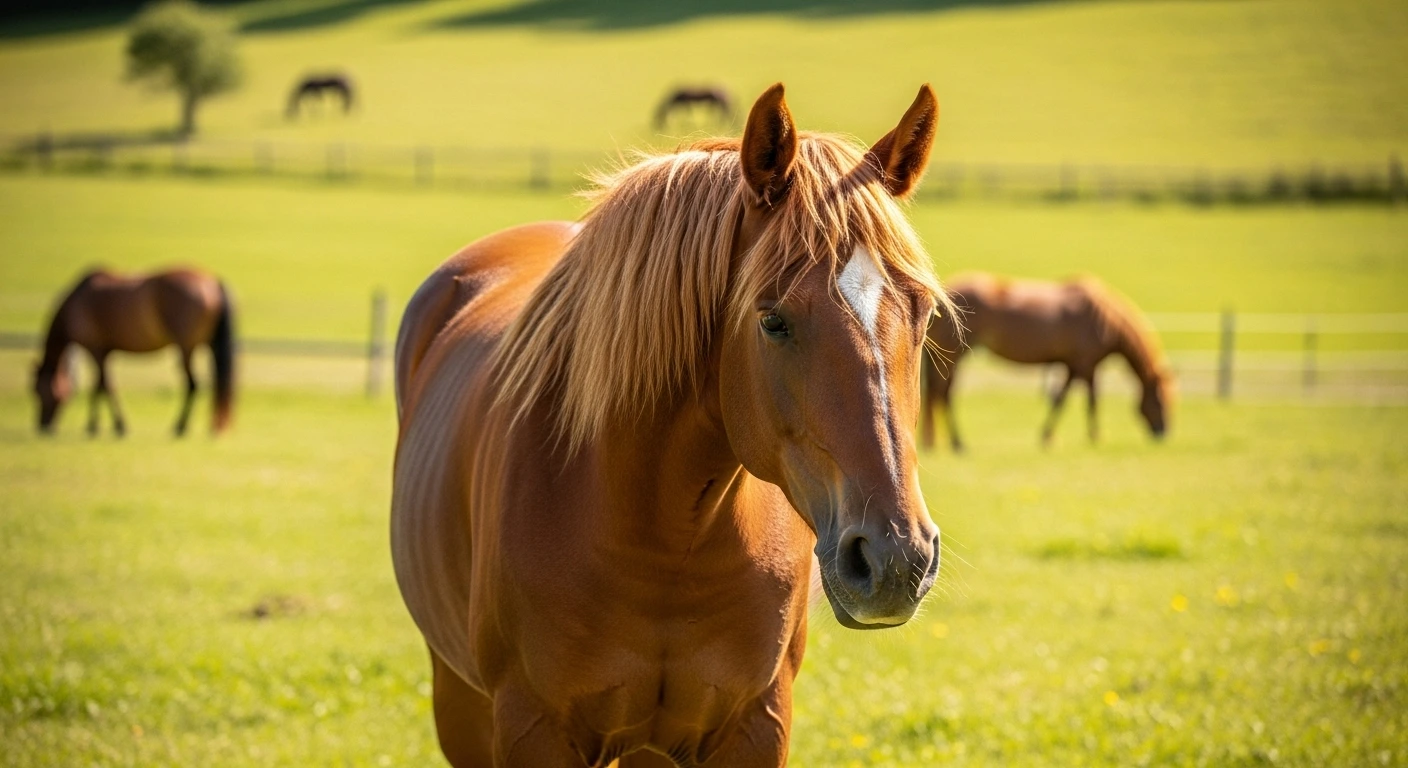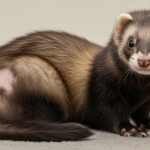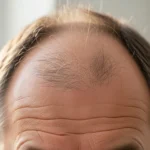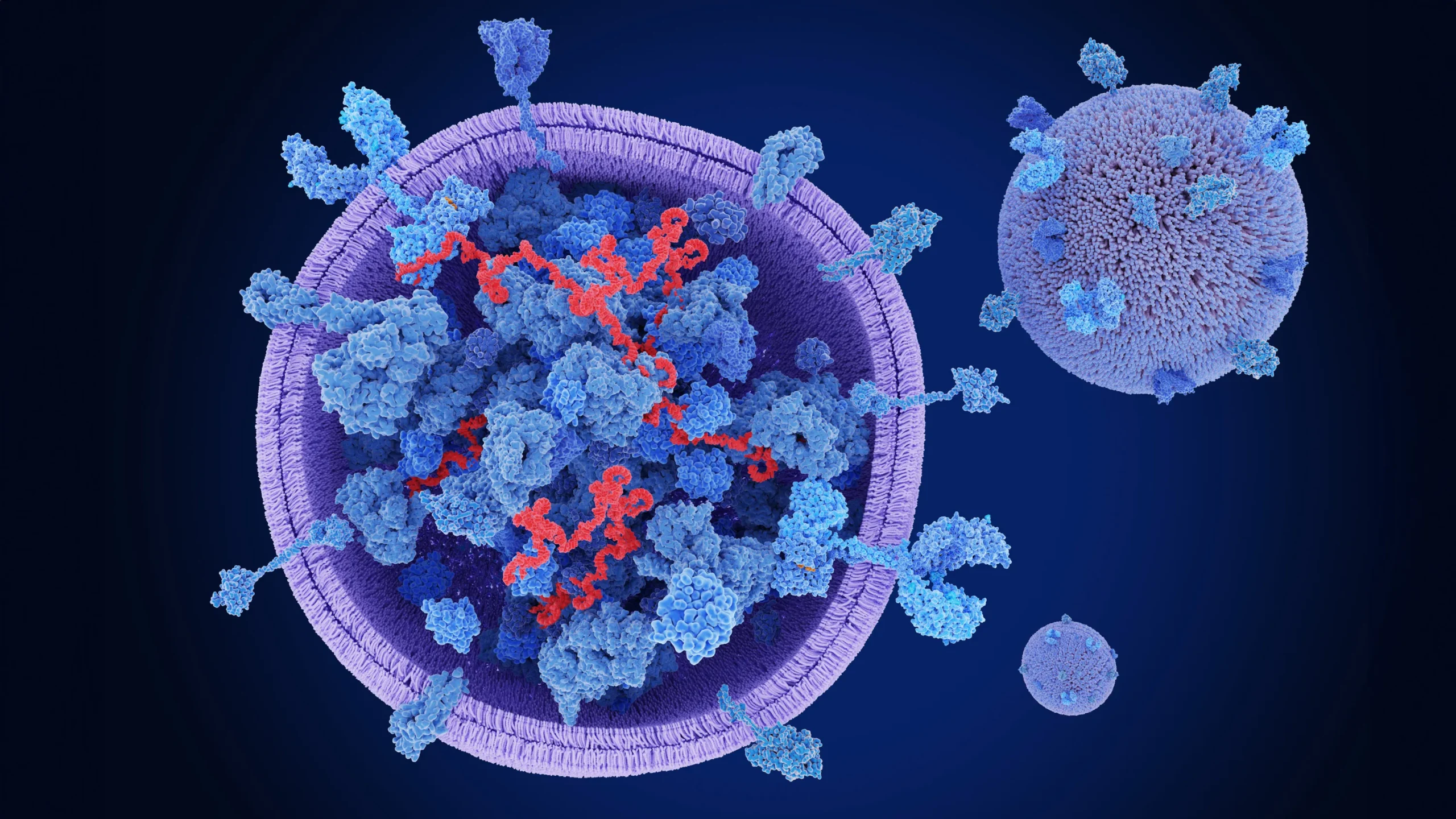Noticing bald patches or unusual shedding in your horse? You're not alone. Hair Loss Alopecia in Horses —known medically as equine alopecia—is more than a cosmetic concern. It often signals underlying issues like infections, allergies, or hormonal imbalances. This article explains the most common causes, how to diagnose the problem, treatment options, and recovery timelines. …
Noticing bald patches or unusual shedding in your horse? You’re not alone. Hair Loss Alopecia in Horses —known medically as equine alopecia—is more than a cosmetic concern.
It often signals underlying issues like infections, allergies, or hormonal imbalances. This article explains the most common causes, how to diagnose the problem, treatment options, and recovery timelines.
You’ll also get expert-backed tips on long-term care so your horse can return to full coat health, comfortably and confidently.
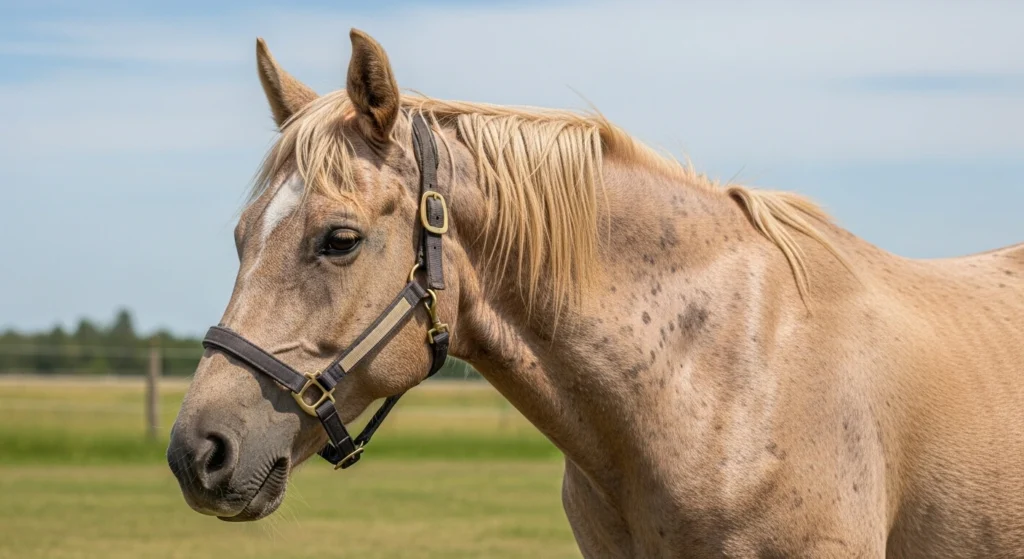
Understanding Hair Loss Alopecia in Horses
Hair loss (Alopecia) in horses can range from minor seasonal shedding to more serious conditions. It’s essential to understand the difference between normal coat changes and pathological hair loss.
Normal Shedding vs Problamatic shedding
- Normal: Happens during seasonal coat changes (spring or fall), evenly across the body.
- Abnormal: Patchy, rapid, or persistent loss with visible sores, scabbing, or itching.
Why It Matters
Persistent hair loss often indicates deeper health problems, from parasites to poor nutrition. Left untreated, it can affect your horse’s comfort, appearance, and even immune function.
Common Causes of Hair Loss Alopecia in Horses
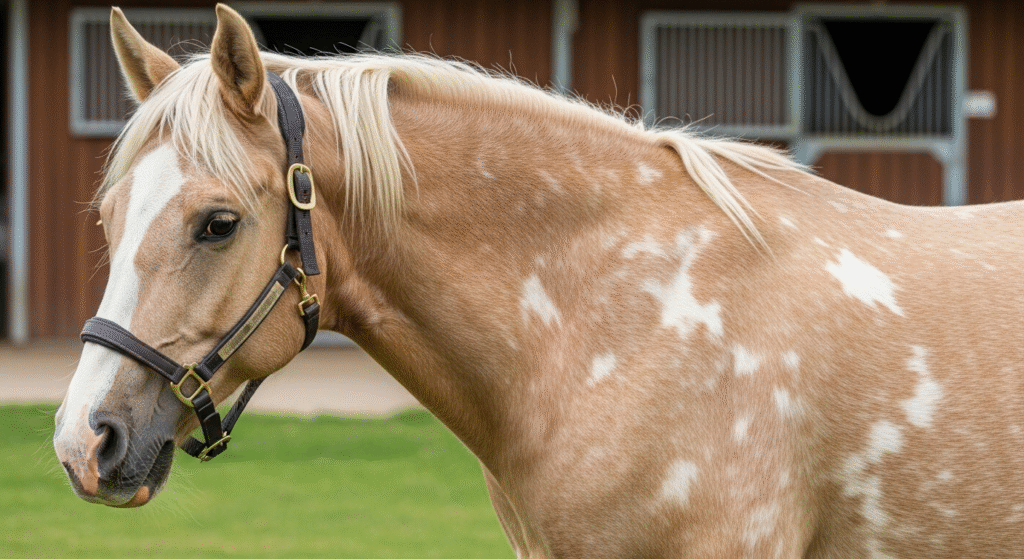
Many factors can contribute to equine alopecia. Here’s a breakdown by category:
Inflammatory Causes
- Bacterial Infections: Rain rot (dermatophilosis) appears as crusty scabs with tufts of hair.
- Fungal Infections: Ringworm is highly contagious and causes circular bald spots.
- Parasitic Infestations: Lice and mites lead to itching, biting, and coat damage.
- Allergic Reactions: Insect bites or certain topical products may cause irritation and hair loss.
Non‑Inflammatory Causes
- Nutritional Deficiencies: Lack of protein, zinc, or essential fatty acids can weaken hair follicles.
- Hormonal Imbalances: Conditions like PPID (Cushing’s disease) or hypothyroidism can thin the coat.
- Mechanical Damage: Poorly fitted saddles, halters, or blankets can rub hair away.
- Seasonal Alopecia: Some horses lose hair in specific months, often around the flanks and face.
Rare/Genetic Conditions
- Congenital Alopecia: Some foals are born with missing or sparse hair.
- HERDA (Hereditary Equine Regional Dermal Asthenia): Genetic disorder seen in certain breeds like Quarter Horses.
Diagnosing the Underlying Cause of Hair Loss in Horses
Proper diagnosis is key to effective treatment. Here’s how vets approach the issue:
Visual & Physical Examination
Vets assess:
- Pattern of hair loss
- Skin condition (scabs, pustules, flaking)
- Any signs of itching or discomfort
Diagnostic Tests of Hair Loss in Horses
- Skin Scrapings: To detect mites or fungal spores
- Cultures/Biopsies: For persistent or confusing cases
- Blood Tests: Evaluate for PPID, nutritional imbalances, or other systemic issues
Hair Loss (Alopecia) in Horses: Effective Treatment:
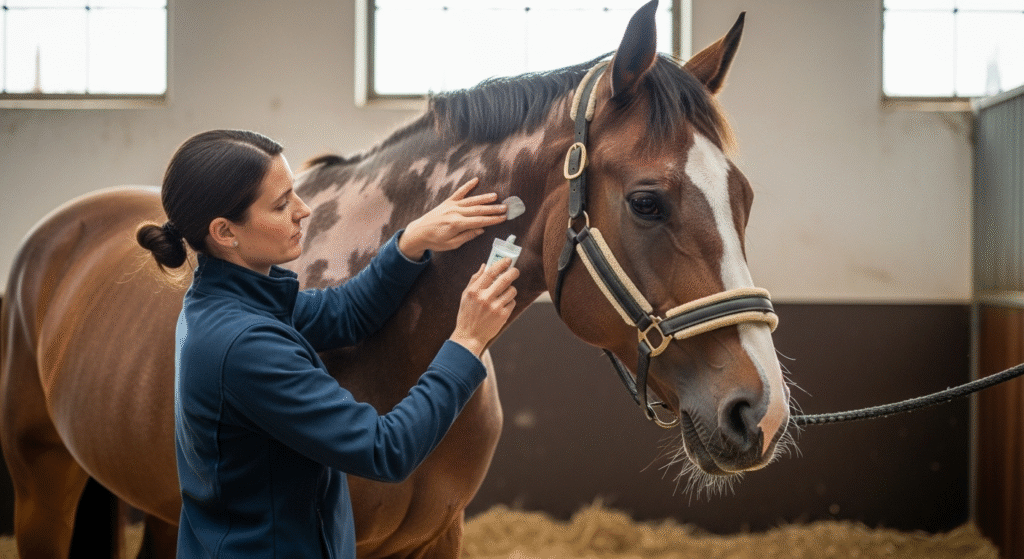
Effective treatment targets the root cause. Here’s what works:
Addressing Infections
- Antifungals (e.g., miconazole for ringworm)
- Antibacterials (chlorhexidine shampoos, topical ointments)
- Anti-parasitics (ivermectin for mites/lice)
Improving Nutrition
- High-quality forage with added zinc, biotin, and omega-3s
- Balanced mineral supplements based on a vet’s blood work recommendation
Preventing Mechanical Damage
- Use proper-fitting gear
- Keep tack clean and dry
- Rotate grazing and remove burrs or irritants from paddocks
Managing Endocrine Disorders
- PPID treatment: Daily pergolide medication and body condition monitoring
- Regular hormone level testing to track progress
Recovery Timeline & What to Expect
Hair regrowth depends on the cause, treatment, and coat cycle.
- Infections/Allergies: 3–6 weeks post-treatment
- Nutritional Deficiency: 6–8 weeks after supplementation
- Hormonal Imbalance: 2–4 months with medication
- Genetic Disorders: Hair may not regrow fully
Prevention & Long-Term Care
Keep your horse’s coat healthy year-round with proactive care
Expert Tips & Recommendations
Work closely with a vet if coat loss recurs frequently
Use a grooming checklist to monitor coat condition weekly
Apply moisturizing sprays for dry skin during winter
Introduce fly sheets and masks in high-insect zones
Keep a photo diary of the coat for tracking recovery
FAQs on Hair Loss in Horses
Is seasonal shedding normal or alopecia?
Seasonal shedding is even and predictable. Alopecia is patchy, sudden, and may include inflammation or itching.
Can horses regrow hair after endocrine disease?
Yes, with proper treatment like pergolide for PPID, coat health often improves within months.
How fast does horse hair grow back?
Typically 0.5–1 inch per month, depending on health, age, and season.
When should I call the vet?
If hair loss is sudden, patchy, persistent, or paired with skin lesions or behavioral changes.
Speak with Our Equine Specialist Today
Worried about unexplained hair loss in your horse? Don’t wait for it to worsen. Book a consultation with our equine dermatology expert, Dr. Uzma Irfan, an ISHRS-certified surgeon, and get a personalized care plan today. Whether it’s nutritional, hormonal, or environmental, we’re here to help restore your horse’s health and shine.

